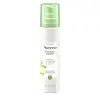What's inside
What's inside
 Key Ingredients
Key Ingredients

No key ingredients
 Benefits
Benefits

 Concerns
Concerns

 Ingredients Side-by-side
Ingredients Side-by-side

Water
Skin ConditioningSodium Cocoyl Glycinate
CleansingCocamidopropyl Betaine
CleansingPEG-80 Sorbitan Laurate
Acrylates/C10-30 Alkyl Acrylate Crosspolymer
Emulsion StabilisingCaprylyl Glycol
EmollientSodium Lauroamphoacetate
CleansingEthylhexylglycerin
Skin ConditioningPhenoxyethanol
PreservativeSodium Hydroxide
BufferingParfum
MaskingActinidia Chinensis Fruit Water
MaskingTetrasodium EDTA
PEG-45m
HumectantButylene Glycol
HumectantYeast Extract
Skin ConditioningGlycine Soja Protein
EmulsifyingWater, Sodium Cocoyl Glycinate, Cocamidopropyl Betaine, PEG-80 Sorbitan Laurate, Acrylates/C10-30 Alkyl Acrylate Crosspolymer, Caprylyl Glycol, Sodium Lauroamphoacetate, Ethylhexylglycerin, Phenoxyethanol, Sodium Hydroxide, Parfum, Actinidia Chinensis Fruit Water, Tetrasodium EDTA, PEG-45m, Butylene Glycol, Yeast Extract, Glycine Soja Protein
Water
Skin ConditioningSodium Cocoyl Glycinate
CleansingSodium Cocoamphoacetate
CleansingCocamidopropyl Betaine
CleansingSodium Chloride
MaskingPolyglyceryl-10 Laurate
Skin ConditioningGlycerin
HumectantAcrylates/C10-30 Alkyl Acrylate Crosspolymer
Emulsion StabilisingGlycol Distearate
EmollientSucrose
HumectantMalpighia Punicifolia Fruit Extract
AntioxidantChaenomeles Sinensis Fruit Extract
AntioxidantCamellia Sinensis Leaf Extract
AntimicrobialFicus Carica Fruit Extract
HumectantGinkgo Biloba Leaf Extract
Skin ConditioningTocopheryl Acetate
AntioxidantCoconut Acid
CleansingSodium Cocoate
CleansingSodium Metabisulfite
AntioxidantPolyquaternium-7
Sodium Benzotriazolyl Butylphenol Sulfonate
UV AbsorberButylene Glycol
HumectantCaprylyl Glycol
EmollientSodium Benzoate
MaskingPhenoxyethanol
PreservativeParfum
MaskingBenzyl Salicylate
PerfumingCI 42090
Cosmetic ColorantCI 16035
Cosmetic ColorantCI 77891
Cosmetic ColorantCI 19140
Cosmetic ColorantCI 15985
Cosmetic ColorantWater, Sodium Cocoyl Glycinate, Sodium Cocoamphoacetate, Cocamidopropyl Betaine, Sodium Chloride, Polyglyceryl-10 Laurate, Glycerin, Acrylates/C10-30 Alkyl Acrylate Crosspolymer, Glycol Distearate, Sucrose, Malpighia Punicifolia Fruit Extract, Chaenomeles Sinensis Fruit Extract, Camellia Sinensis Leaf Extract, Ficus Carica Fruit Extract, Ginkgo Biloba Leaf Extract, Tocopheryl Acetate, Coconut Acid, Sodium Cocoate, Sodium Metabisulfite, Polyquaternium-7, Sodium Benzotriazolyl Butylphenol Sulfonate, Butylene Glycol, Caprylyl Glycol, Sodium Benzoate, Phenoxyethanol, Parfum, Benzyl Salicylate, CI 42090, CI 16035, CI 77891, CI 19140, CI 15985
 Reviews
Reviews

Ingredients Explained
These ingredients are found in both products.
Ingredients higher up in an ingredient list are typically present in a larger amount.
Acrylates/C10-30 Alkyl Acrylate Crosspolymer is a synthetic polymer. It is used to thicken and improve the texture of products. Due to its properties, it can prevent water and oil ingredients from separating.
Butylene Glycol (or BG) is used within cosmetic products for a few different reasons:
Overall, Butylene Glycol is a safe and well-rounded ingredient that works well with other ingredients.
Though this ingredient works well with most skin types, some people with sensitive skin may experience a reaction such as allergic rashes, closed comedones, or itchiness.
Learn more about Butylene GlycolCaprylyl Glycol is a humectant and emollient, meaning it attracts and preserves moisture.
It is a common ingredient in many products, especially those designed to hydrate skin. The primary benefits are retaining moisture, skin softening, and promoting a healthy skin barrier.
Though Caprylyl Glycol is an alcohol derived from fatty acids, it is not the kind that can dry out skin.
This ingredient is also used as a preservative to extend the life of products. It has slight antimicrobial properties.
Learn more about Caprylyl GlycolCocamidopropyl Betaine is a fatty acid created by mixing similar compounds in coconut oil and dimethylaminopropylamine, a compound with two amino groups.
This ingredient is a surfactant and cleanser. It helps gather the dirt, pollutants, and other impurities in your skin to be washed away. It also helps thicken a product and make the texture more creamy.
Being created from coconut oil means Cocamidopropyl Betaine is hydrating for the skin.
While Cocamidopropyl Betaine was believed to be an allergen, a study from 2012 disproved this. It found two compounds in unpure Cocamidopropyl Betaine to be the irritants: aminoamide and 3-dimethylaminopropylamine. High-grade and pure Cocamidopropyl Betaine did not induce allergic reactions during this study.
Learn more about Cocamidopropyl BetaineParfum is a catch-all term for an ingredient or more that is used to give a scent to products.
Also called "fragrance", this ingredient can be a blend of hundreds of chemicals or plant oils. This means every product with "fragrance" or "parfum" in the ingredients list is a different mixture.
For instance, Habanolide is a proprietary trade name for a specific aroma chemical. When used as a fragrance ingredient in cosmetics, most aroma chemicals fall under the broad labeling category of “FRAGRANCE” or “PARFUM” according to EU and US regulations.
The term 'parfum' or 'fragrance' is not regulated in many countries. In many cases, it is up to the brand to define this term.
For instance, many brands choose to label themselves as "fragrance-free" because they are not using synthetic fragrances. However, their products may still contain ingredients such as essential oils that are considered a fragrance by INCI standards.
One example is Calendula flower extract. Calendula is an essential oil that still imparts a scent or 'fragrance'.
Depending on the blend, the ingredients in the mixture can cause allergies and sensitivities on the skin. Some ingredients that are known EU allergens include linalool and citronellol.
Parfum can also be used to mask or cover an unpleasant scent.
The bottom line is: not all fragrances/parfum/ingredients are created equally. If you are worried about fragrances, we recommend taking a closer look at an ingredient. And of course, we always recommend speaking with a professional.
Learn more about ParfumPhenoxyethanol is a preservative that has germicide, antimicrobial, and aromatic properties. Studies show that phenoxyethanol can prevent microbial growth. By itself, it has a scent that is similar to that of a rose.
It's often used in formulations along with Caprylyl Glycol to preserve the shelf life of products.
Sodium Cocoyl Glycinate is a cleansing agent. It can be naturally derived or synthetically-created.
As a surfactant, it helps clean your skin by gathering dirt, oil, and other pollutants to be rinsed away more easily.
Water. It's the most common cosmetic ingredient of all. You'll usually see it at the top of ingredient lists, meaning that it makes up the largest part of the product.
So why is it so popular? Water most often acts as a solvent - this means that it helps dissolve other ingredients into the formulation.
You'll also recognize water as that liquid we all need to stay alive. If you see this, drink a glass of water. Stay hydrated!
Learn more about Water